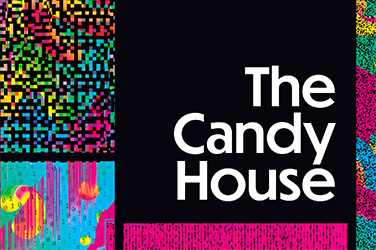
- Free Article: No
- Contents Category: Fiction
- Review Article: Yes
- Article Title: The Goon Squad returns
- Article Subtitle: Jennifer Egan’s ‘exploded narrative’
- Online Only: No
- Custom Highlight Text:
Although Jennifer Egan had several novels under her belt by the end of the 2000s, perhaps most notably the slyly metafictional The Keep (2006), her 2010 novel, A Visit from the Goon Squad, took the concern with the inner workings of contemporary culture and consciousness that wound its way through those earlier books, and translated it into something startlingly new and resonant. A meditation on time, loss, and possibility filtered through music and the music industry, it was as striking for its formal playfulness as it was for its acuity and countercultural savvy. In the decade and a bit since Goon Squad, Egan has produced only one book, Manhattan Beach (2017), a historical novel set in the 1930s and 1940s. Despite its emotional richness and interest in the often-obscured wartime experiences of women and African-Americans, Manhattan Beach is an oddly subdued novel, its conventional surfaces at odds with the spiky energy that makes most of Egan’s fiction so exciting.
- Featured Image (400px * 250px):

- Alt Tag (Featured Image): James Bradley reviews 'The Candy House' by Jennifer Egan
- Book 1 Title: The Candy House
- Book 1 Biblio: Corsair, $32.99 pb, 334 pp
- Book 1 Readings Link: booktopia.kh4ffx.net/oevevb
Egan’s new novel, The Candy House, returns to both the characters and many of the preoccupations of Goon Squad. Not quite a sequel, more like a companion piece that extends and deepens its predecessor, it shares Goon Squad ’s fractured narrative structure, assembling itself out of a sequence of interconnected stories that only make complete sense in their totality.
The book opens with ‘The Affinity Charm’, which centres on Bix Boulton, a bit player in Goon Squad ’s ‘Out of Body’. In that earlier story, Bix’s friend Rob drowns after an ill-fated morning swim in New York’s East River. ‘The Affinity Charm’ is set a decade or so later, in 2010. In the years since Rob’s death, Bix has been catapulted into impossible wealth by virtue of his invention of a technology known as Mandala, which draws on the work of fictional anthropologist Miranda Kline to quantify – and monetise – the networks of affinity that drive trust and influence.
 Jennifer Egan (photograph via Hachette)
Jennifer Egan (photograph via Hachette)
Now in his forties and weighed down by the kind of celebrity that attaches to Mark Zuckerberg and Elon Musk, Bix finds himself adrift, with no idea of what to do next. The answer comes during a conversation with a group that has gathered to discuss Kline’s work, when one of the attendees mentions a new project to record and upload memories and experiences.
The transformative effects of this technology and its applications are the engine that drives The Candy House. As the ability to record and share memories spreads, it alters everything, simultaneously breaking down barriers between individuals and creating new divisions and cultural anxieties, ranging from eluders – people who elect to disappear from the collective unconscious – and the counters employed by tech companies to detect the Potemkin identities they leave in their place, to a growing underground determined to resist the soma-like seductions of the hivemind.
As with Goon Squad, The Candy House’s exploded narrative structure arcs backwards and forwards in time, leaping between characters and perspectives as it bounces from the 1960s to the 2030s. Many of its characters will be familiar from Goon Squad, in particular music executive Bennie Salazar and his former assistant, Sasha, who has reinvented herself as an artist with a line in vast sculptures in the desert. Record producer Lou Kline and his multiple wives and children feature also reappear, as does his protégé, Bennie Salazar, the publicist Dolly, her daughter Lulu, and the former teen star, Kitty, now a fiftyish actress of middling and declining success. Other characters also come into sharper focus, most notably Ted’s son, Miles, and Lou’s children by his third wife, Miranda, Lana and Melora.
Egan has long been fascinated by the possibilities and implications of technology, in particular the way it shapes the narratives with which we represent the world and construct ourselves. These questions are obviously never far away in The Candy House, but they also crop up in experiments in narrative form like the remarkable story in PowerPoint that helps to bookend Goon Squad.
There is nothing quite as formally audacious as that PowerPoint presentation in The Candy House. But its innovations are, if anything, richer and more suggestive. In one story, Lulu narrates her experience as a citizen spy, an interlude that involves the implantation of an array of surveillance technology in her body and brain, and that leaves her badly injured and traumatised: Egan presents her narrative as a series of second-person instructions whose gnomic distance eloquently capture Lulu’s dissociation. Even more exciting is the delightfully titled ‘See Below’, which is told entirely in emails and messages, and manages to be both a contemporary riff on the epistolary narrative and a brilliant and ultimately beautiful exploration of longing and redemption.
Yet there is occasionally also something oddly backward-looking about The Candy House. Early on, Miles’s brother, Alfred, begins screaming in public at random intervals. Quizzed about it by a potential girlfriend, he tells her it is about a desire for authenticity, a way of unsettling and provoking people to elicit ‘genuine human responses rather than the made-up crap we serve each other all day long’. Likewise, late in the novel, Miles’s other brother, Ames, reflects that ‘knowing everything is too much knowing nothing; without a story it’s all just information’. Instead, only fiction contains the infinite space of human possibility
This sense that something is lost when we embrace new forms of connectivity is made manifest in Lou’s observation, when one of his interns shows him Napster, that ‘in five years, not a single person is going to pay for music … I’m watching a tidal wave … the complete annihilation of my business’. Yet The Candy House as a whole is too canny to give way to anything as simplistic as regret. As Bennie observes late in the novel, while discussing a plan to resurrect the career of an ageing rock star by rerecording his songs, the ‘tongue-in-cheek nostalgia’ they hope to appeal to is not the endpoint of the scheme, ‘but merely the portal, the candy house, if you will, though which we hope to lure in a new generation and bewitch them. The thing that changes everything: isn’t that always the goal?’


Comments powered by CComment